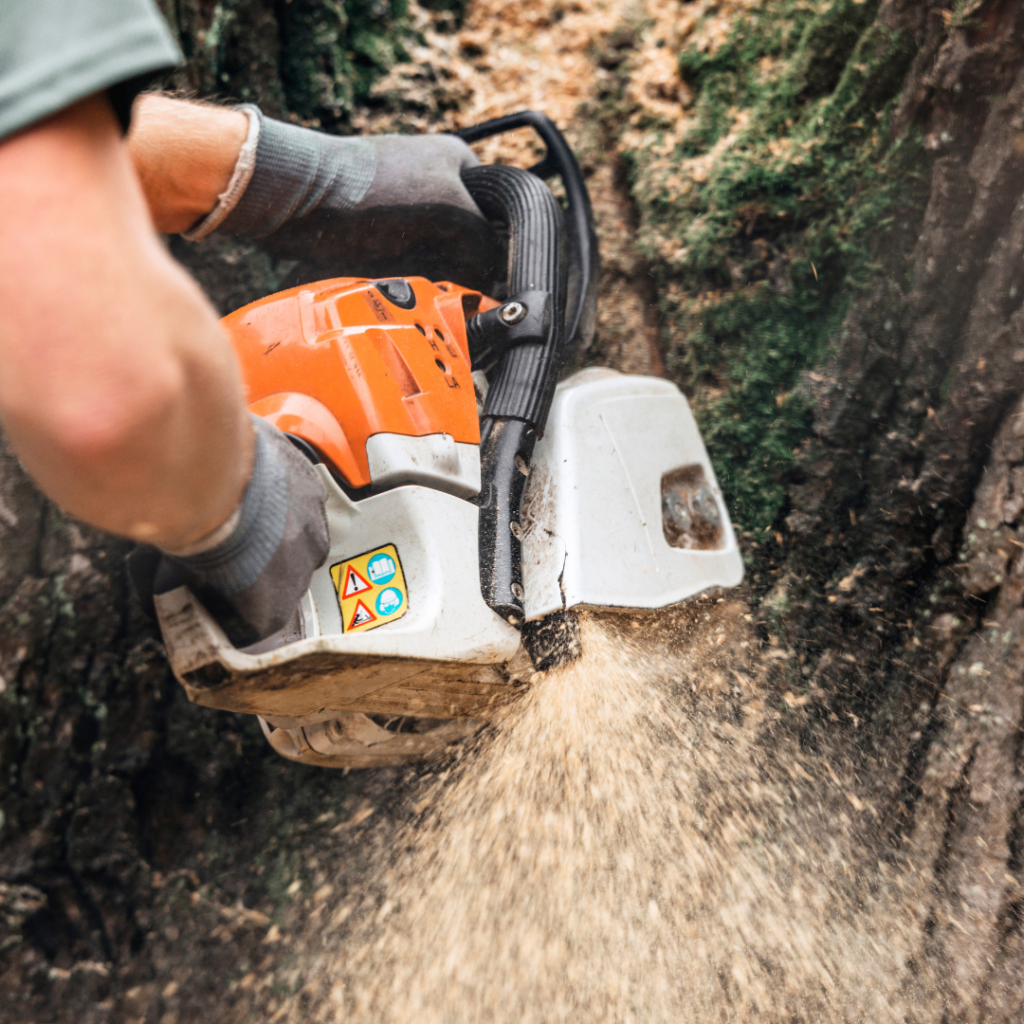In the realm of commercial property management, the presence of trees can add aesthetic appeal, shade, and ecological benefits. However, alongside these advantages come potential risks that require careful management. From property damage caused by falling branches to liability issues stemming from neglected tree maintenance, the responsibilities can be daunting for business owners and property managers alike. This is where professional commercial tree services step in, offering a comprehensive solution to mitigate these risks and ensure the health and safety of both the property and its occupants. In this blog series, we delve into the critical role of professional commercial tree services in safeguarding commercial properties. We’ll explore the array of services they offer, ranging from routine maintenance like pruning and trimming to emergency response for storm-damaged trees. By understanding the importance of proactive tree care and partnering with knowledgeable professionals, businesses can protect their investments, minimize liabilities, and foster a safer and more inviting environment for employees, customers, and visitors alike.
Understanding the Importance of Professional Commercial Tree Services
Trees contribute significantly to the aesthetics, functionality, and environmental quality of commercial properties. However, their presence also brings potential risks that can jeopardize the safety of occupants and the integrity of the property itself. In the realm of commercial real estate, mitigating these risks is paramount, and professional tree services play a pivotal role in achieving this goal. In this article, we delve into the importance of professional commercial tree services, examining how they contribute to risk mitigation and overall property management.
Enhancing Safety Standards
Professional commercial tree services are essential for maintaining safety standards on commercial properties. Trees, if left unmanaged, can pose various risks such as falling branches, unstable root systems, and overgrown foliage. By engaging expert arborists, property owners can identify and address potential hazards before they escalate into safety incidents.
Preserving Property Aesthetics
The visual appeal of commercial properties often relies on the presence of well-maintained trees and landscaping. Professional tree services ensure that trees are pruned, shaped, and cared for in a manner that enhances their aesthetic value while preserving the overall landscape design. This contributes to a positive impression among clients, tenants, and visitors.
Protecting Property Infrastructure
Trees in close proximity to buildings, roads, and utilities can pose risks to infrastructure integrity if not properly managed. Professional tree services employ techniques such as selective pruning and root management to prevent damage to structures, pavement, and underground utilities. By safeguarding property infrastructure, these services help minimize costly repairs and disruptions.
Mitigating Liability Risks
Commercial property owners have a legal obligation to ensure the safety of their premises for employees, customers, and the public. Neglecting tree maintenance can result in liability risks in the event of property damage or personal injury caused by tree-related incidents. Professional tree services help mitigate these risks by implementing proactive maintenance practices and adhering to safety standards and regulations.
Promoting Environmental Sustainability
Trees play a vital role in environmental sustainability by improving air quality, conserving energy, and supporting biodiversity. Professional tree services adopt eco-friendly practices that promote the health and longevity of trees while minimizing environmental impact. From organic pest management to sustainable pruning techniques, these services contribute to a greener and more sustainable urban environment.
Identifying Potential Risks: Why Commercial Properties Need Tree Services
Introduction: Trees are often celebrated for their beauty, environmental benefits, and contribution to the overall ambiance of commercial properties. However, alongside these benefits come potential risks that can pose challenges to property owners and managers. From falling branches to root damage, it’s crucial for commercial property stakeholders to recognize and address these risks proactively. In this article, we explore why commercial properties need tree services to identify and mitigate potential risks effectively.

Falling Branches and Debris
One of the most significant risks associated with trees on commercial properties is the potential for falling branches and debris. Dead or weakened branches can pose hazards to pedestrians, vehicles, and structures, leading to property damage and personal injury. Professional tree services conduct regular inspections to identify and remove hazardous branches, reducing the risk of accidents and liability.
Structural Instability
Trees with structural defects or compromised stability present a significant risk to commercial properties. Factors such as poor pruning practices, pest infestations, and disease can weaken tree structure, increasing the likelihood of failure during adverse weather conditions. Arborists skilled in tree risk assessment can identify signs of structural instability and recommend appropriate measures to mitigate risks, such as cabling or tree removal.
Root Damage and Soil Compaction
The root systems of trees can extend far beyond their canopy, potentially causing damage to underground utilities, foundations, and pavement on commercial properties. Soil compaction from foot traffic, construction activities, or heavy machinery can further exacerbate root stress and reduce tree health. Tree services employ techniques like root pruning and soil aeration to alleviate compaction and prevent root-related damage to property infrastructure.
Disease and Pest Infestation
Trees are susceptible to various diseases and pest infestations that can compromise their health and structural integrity. Left unchecked, these issues can spread throughout a property, affecting multiple trees and vegetation. Professional arborists are trained to identify symptoms of disease and pest infestation early on, implementing appropriate treatment strategies to prevent further spread and mitigate risks to commercial landscapes.
Overhanging Branches and Property Damage
Overhanging branches from neighboring properties or public rights-of-way can pose risks to commercial buildings, signage, and outdoor amenities. In addition to the potential for physical damage, these branches may obstruct views, impede access, or create safety hazards for pedestrians and vehicles. Tree services offer solutions such as pruning, trimming, or canopy reduction to address overhanging branches and minimize property damage risks.
The Science Behind Tree Risk Assessment
Tree risk assessment is a systematic process that evaluates the likelihood of tree failure and the potential consequences of such failure. Grounded in scientific principles and arboricultural expertise, this practice plays a crucial role in ensuring the safety of trees in various settings, including commercial properties. Understanding the science behind tree risk assessment is essential for property owners and managers seeking to proactively manage tree-related risks.
- Visual Inspection and Diagnostic Tools: Arborists utilize visual inspections along with specialized diagnostic tools such as restograph and sonic tomography to assess the structural integrity and health of trees. These tools provide valuable insights into internal decay, cavities, and other hidden defects that may compromise tree stability.
- Tree Biomechanics: Tree risk assessment incorporates principles of biomechanics to evaluate factors such as tree architecture, wood strength, and load distribution. By analyzing the biomechanical properties of trees, arborists can predict potential failure points and assess the likelihood of tree failure under various stress conditions.
- Tree Health Evaluation: Assessing tree health is a critical component of risk assessment, as diseased or stressed trees are more susceptible to failure. Arborists examine factors such as foliage density, canopy dieback, and root condition to determine the overall health and vitality of trees on a property.
- Environmental Factors: Environmental factors such as soil composition, drainage patterns, and prevailing weather conditions influence tree stability and risk. Arborists consider these factors during risk assessment to identify potential hazards and recommend appropriate mitigation measures.
Conclusion
Ensuring the health and safety of your commercial property through professional tree services is paramount. With the expertise and experience of Tree Service Legends, you can mitigate risks associated with overgrown or damaged trees. Our comprehensive services, including tree trimming, removal, and maintenance, are tailored to meet the unique needs of your commercial landscape in Ocala, FL.
For further inquiries or to schedule a consultation, please don’t hesitate to reach out to us at (352) 558-2348. Our team is dedicated to providing top-notch tree care solutions to safeguard your property and enhance its aesthetics. Let Tree Service Legends be your partner in maintaining a safe and beautiful environment for your business. Contact us today to experience the difference professional commercial tree services can make.
